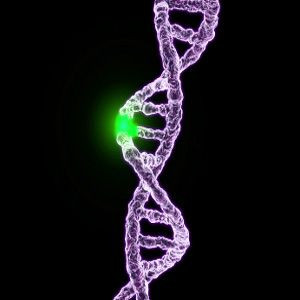Urticaria, A Rare Disorder Causing Allergic Reaction To Vibrations, May Result From This Genetic Mutation

Whether the “vibes” are good or bad, some people simply cannot tolerate them. For people with a rare inherited disorder known as urticaria, running, clapping their hands, or taking a bumpy ride in a car — any encounter with vibrations — may cause itchy red welts. By studying patients and their families, scientists at the National Institutes of Health have identified a genetic mutation linked to this disorder's signature rashes, which are caused by a release of inflammatory chemicals from the immune system’s mast cells.
In addition to hives, people with vibratory urticaria also sometimes experience headaches, fatigue, blurry vision, flushing, and a metallic taste in their mouths, the researchers say. Though generally symptoms disappear in an hour, urticaria patients may experience several episodes each day. Yet the disease has a wide variety of triggers, making diagnosis and treatment a challenge for patients and doctors alike. Even if doctors succeed in identifying the cause, only some patients can be cured by the appropriate therapy, an antibiotic treatment. Most patients are only able to treat the symptoms, which is simply insufficient, according to the Urticariaday2015 website.
Family History
For the current study, the NIH researchers focused on mast cells, which reside in the skin and other tissues. In response to certain stimuli, these cells will release histamine and other inflammatory chemicals into the bloodstream and surrounding tissue. To learn whether mast cell might be involved in vibratory urticaria, the scientists worked with three families, each with a three-generation history of the rare disorder.
The researchers measured family members’ blood levels of histamine during episodes of vibration-induced hives. Histamine levels rose rapidly in response to vibration and subsided after about an hour, indicating that mast cells had released their contents. Comparing this to how an unaffected person reacts, the researchers observed a similar though more mild response.
“This suggests that a normal response to vibration, which does not cause symptoms in most people, is exaggerated in our patients with this inherited form of vibratory urticaria,” said Dr. Hirsh Komarow, the senior author of the study.
The next stop in the search for a cause? Gene sequencing.
The scientists performed genetic analyses on 36 affected and unaffected members from three separate families afflicted with this disorder. They found a single mutation in the ADGRE2 gene shared by family members with vibratory urticaria, but not present in unaffected people. Taking the research one step further, the scientists examined the DNA of more than 1,000 unaffected people with a similar genetic ancestry as the three families, but did not detect the ADGRE2 mutation.
Next, the scientists plan to recruit more families with a history of urticaria to look for additional mutations. Though they may never be able to turn bad vibrations good, someday they may learn how to cure or more effectively treat patients with this rare disorder.
Source: Boyden SE, Desai A, Cruse G, et al. Vibratory Urticaria Associated with a Missense Variant in ADGRE2. New England Journal of Medicine. 2016.
Published by Medicaldaily.com



























